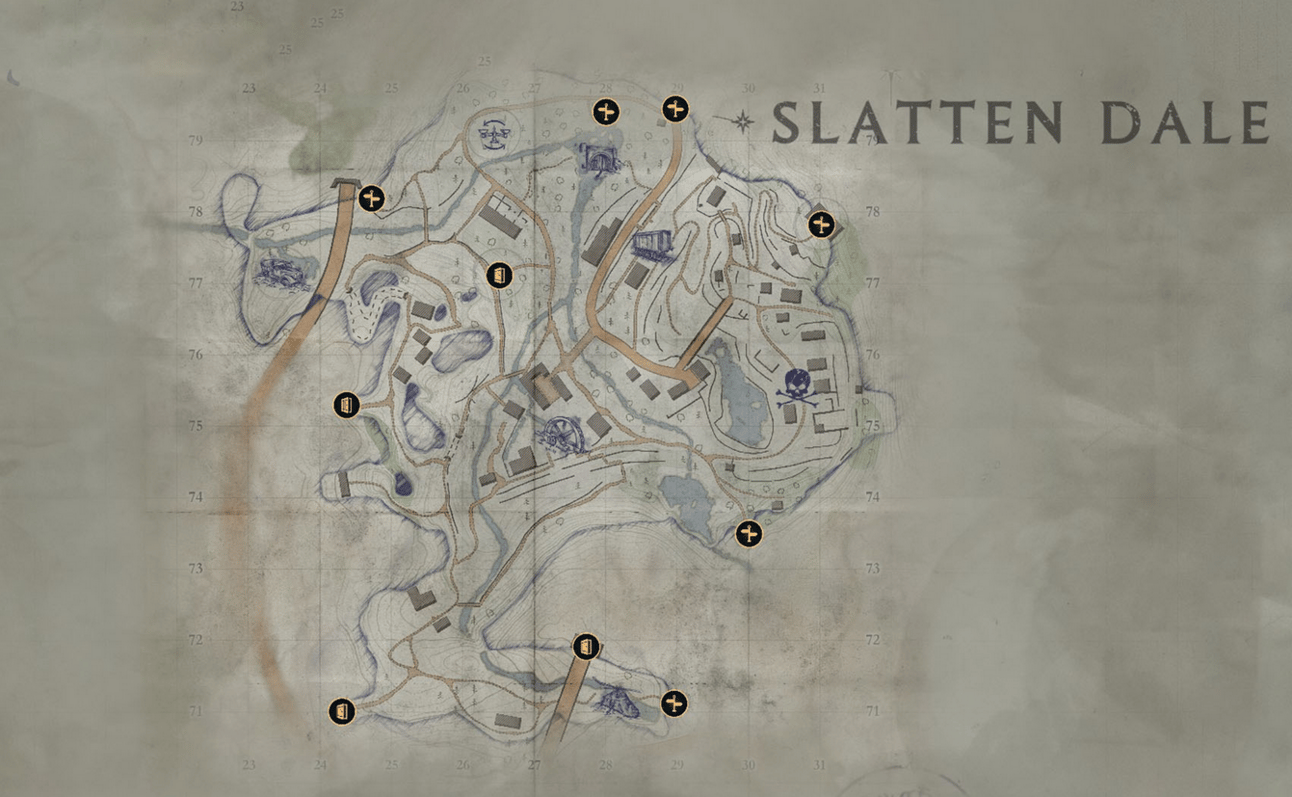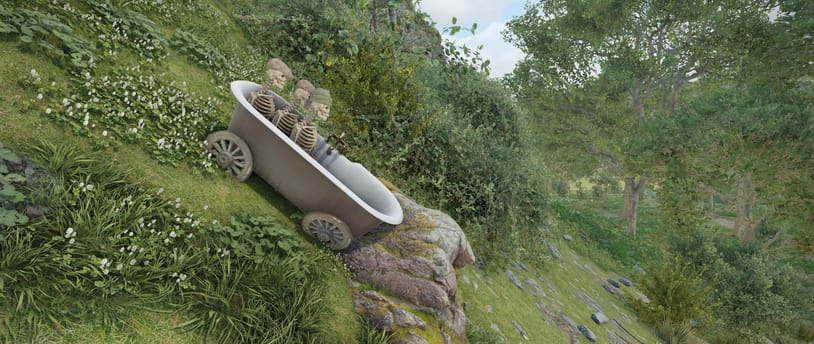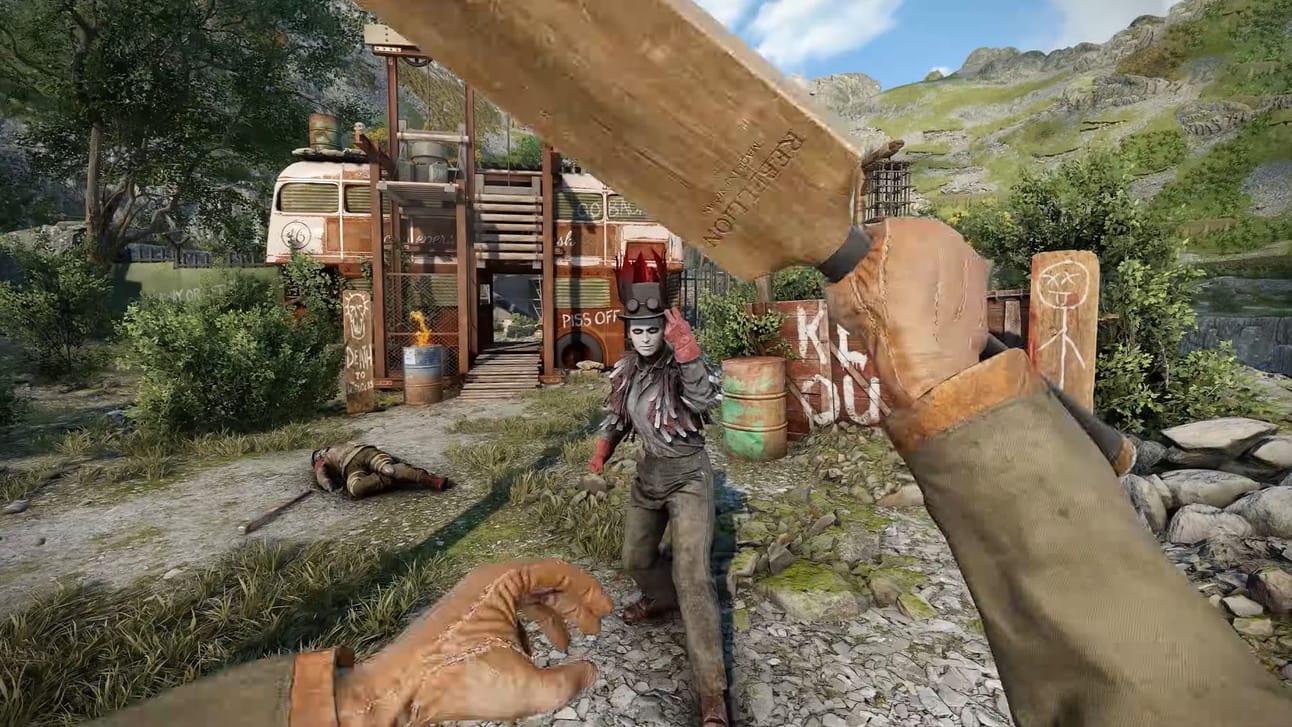Last night, I rolled credits on Rebellion Games’ Atomfall, a post-apocalyptic sort-of-open-world game set in 1950s Britain. I had a great time with the game once I dropped the combat difficulty a little. The world is vibrant and well-crafted. Every area has enough detail and set-pieces that, after a few wrong turns, you can navigate the entire world without a map.

Which is good, because the map looks like this.
And when I say well-crafted, I mean they impressed me. Quest design in Atomfall is open-ended. Not only are there multiple ways to complete the game, there are multiple ways to complete each area, and even multiple ways to find the areas. After exiting the initial bunker, I met - in a surprising turn for a genre that likes to hand-hold - with a three-way crossroads, the exploding Windscale atomic plant as its backdrop. I chose the central path, assuming it to be the intended one, where a man with a guitar told me to find a bunker known as The Interchange, and kill somebody named Oberon. I later went back to explore and found that each route points you to Interchange in its own way, be it a keycard on a dead body, a note with coordinates, or talk of army movements. And that’s when the game stops holding your hand. Reader, it never picks it back up again. Freedom in Atomfall is the freedom to approach each situation in your own way, to wander lost, and to fail.

It’s also the second most British game I’ve ever seen1
There are no map markers, only hints found in the world that gradually build a bigger picture of your current quest. It’s up to you to investigate, to explore, not to follow a compass point. They tread a delicate balance between the frustration and the joy of getting lost, and I think they tread it perfectly.
If I have to nitpick, and I do, it’s that the combat is a little too unforgiving, at least initially. The game is completable without killing a single person, though stealth is no cakewalk. Eventually, the game gives you the tools to sneak well, to turn turrets on and off, to reroute power and open up shortcuts, but before then, while you’re still learning the mechanics to boot, you flounder, under-powered, against outlaws and soldiers who are hand-to-hand experts. Why they haymaker me so hard I stagger for three seconds but, when I hit them, they hardly recoil is anyone’s guess. I sting like a butterfly; they sting like a bee.

That’s just not cricket haw haw haw
The progression system, too, is awkward. It relies on exploring to find items that each grant a perk point, but the more fun (and sometimes essential - looking at you, Stealth Kills Are Silent) perks cost up to seven at a time! That turns a reward from a sugar high to a crashing disappointment, because you can’t afford anything. I’d much prefer a tree where each perk point nets me a bonus, even if it’s not the one I’m most looking forward to.
The ending also feels anticlimactic. I remember thinking, when the game’s credits rolled, that I still lacked answers, that it owed me a final set-piece, and I’d never gotten one. However, I was impressed that the last segment had been so open-ended that I spotted three different ways to complete it, none of which involved combat.
Atomfall is £45 on Steam right now and it’s available on Game Pass. I can’t speak for value - one person’s £50 is different to another’s, but I had a superb time with it. If I were the type to put numbers on games, I’d give it a seven out of ten. If you’re a nerd who’s as fascinated by encounter design as I am, it’s a nine. Atomfall was Rebellion’s best-selling launch to date, filling me with hope for a sequel. I long to return to the menacing village of Windham, and delve deeper into the mysteries of Windscale, the Interchange, B.A.R.D, and Oberon.
1 the most British game is the incredible Thank Goodness You’re Here!
